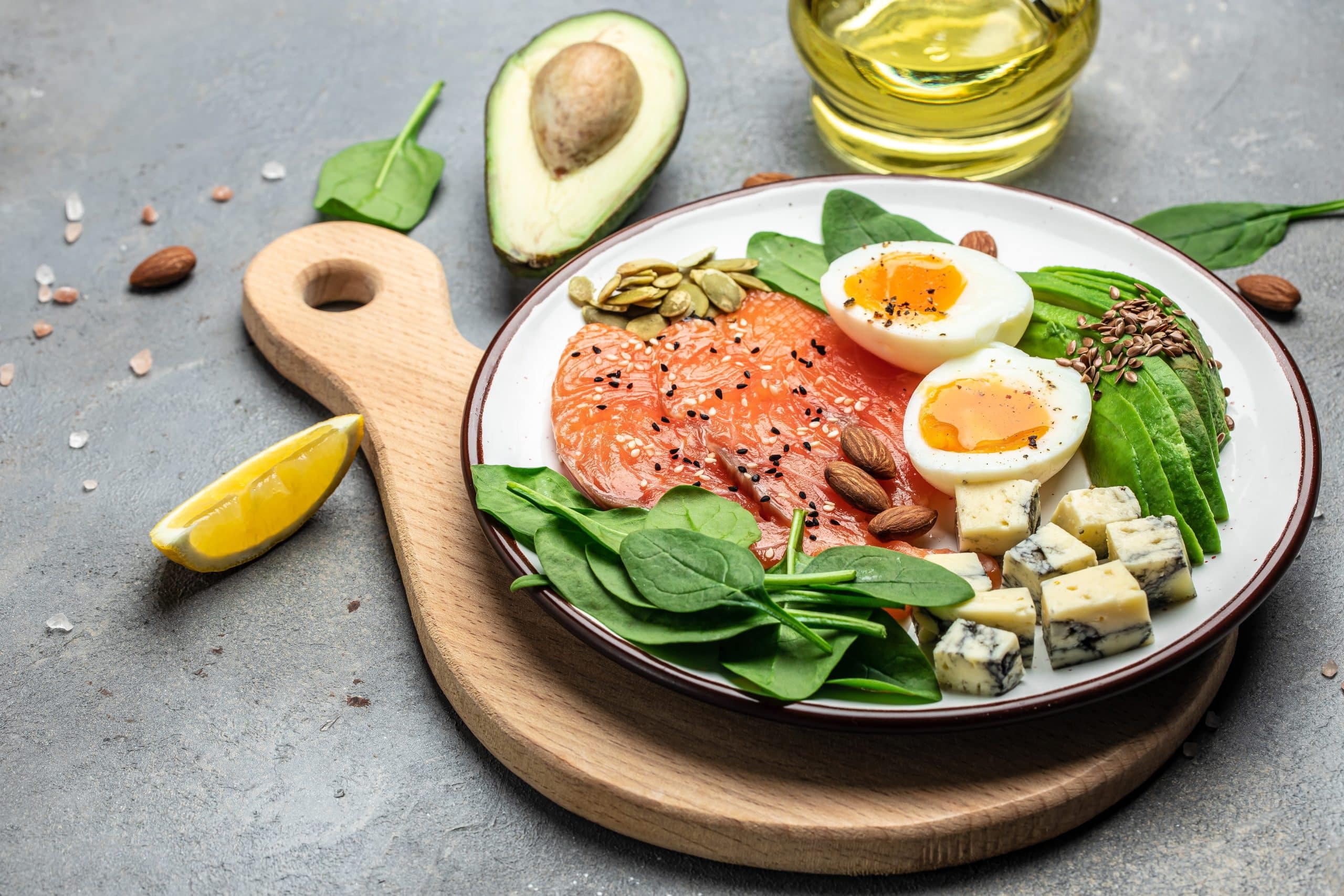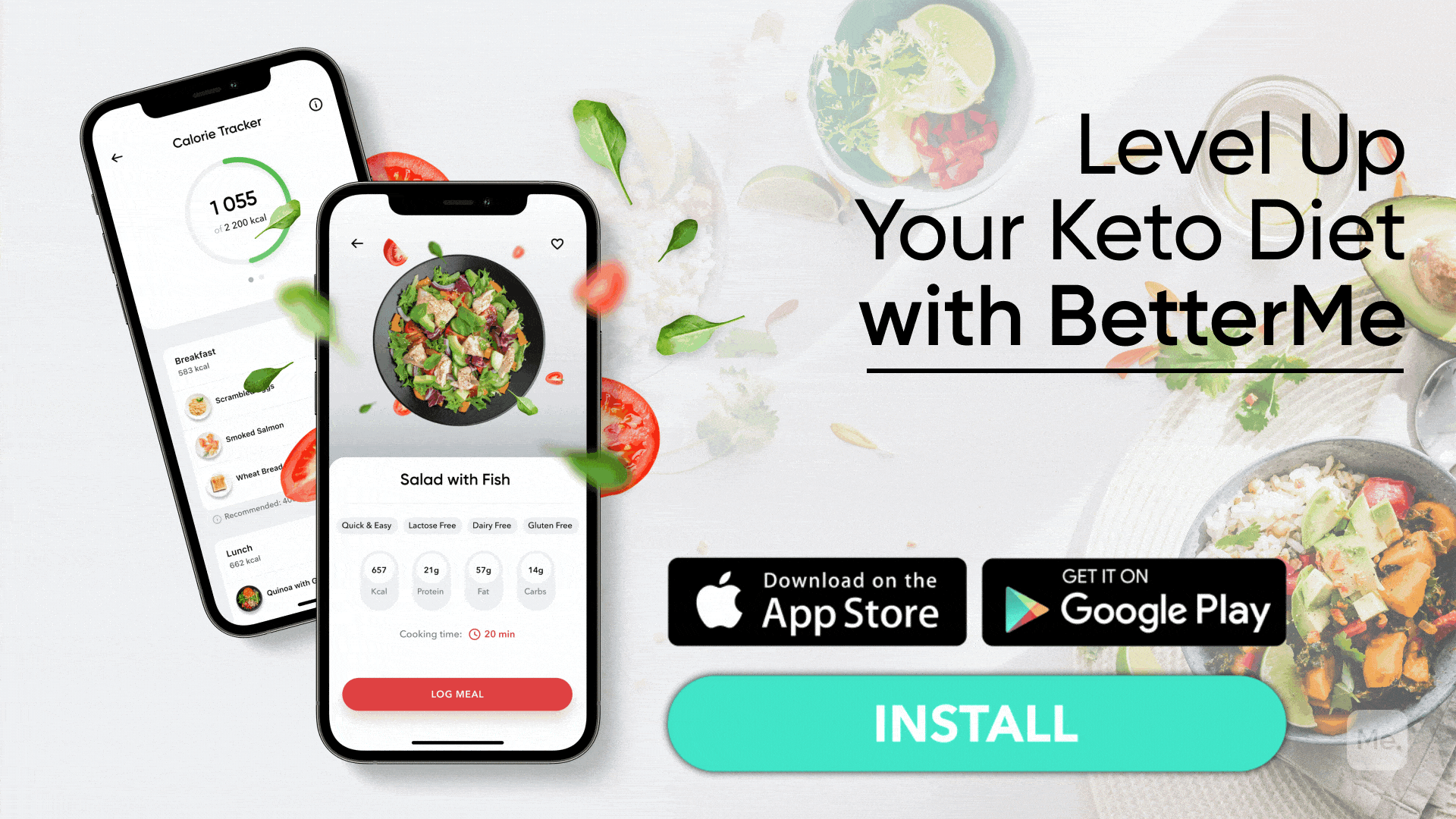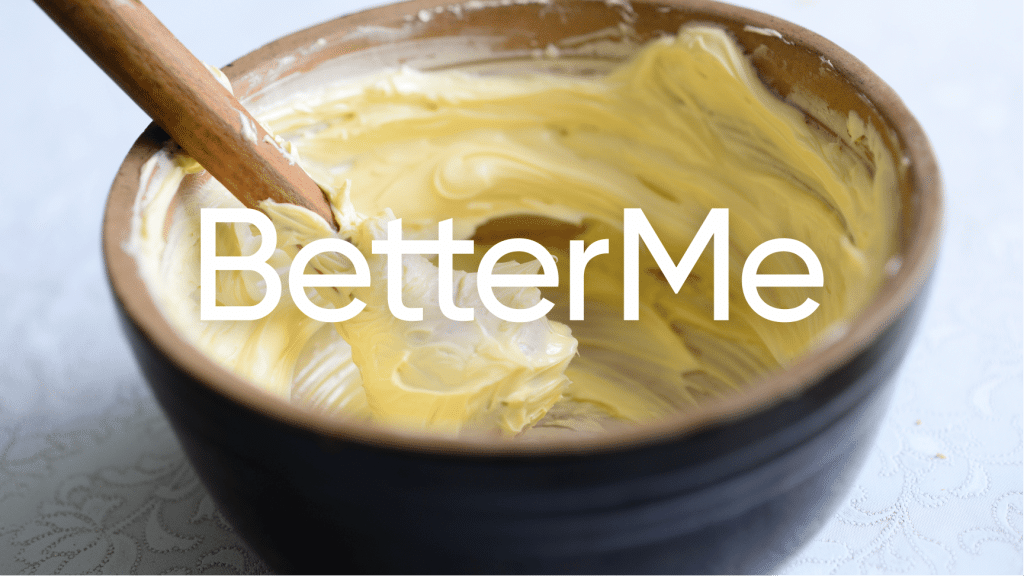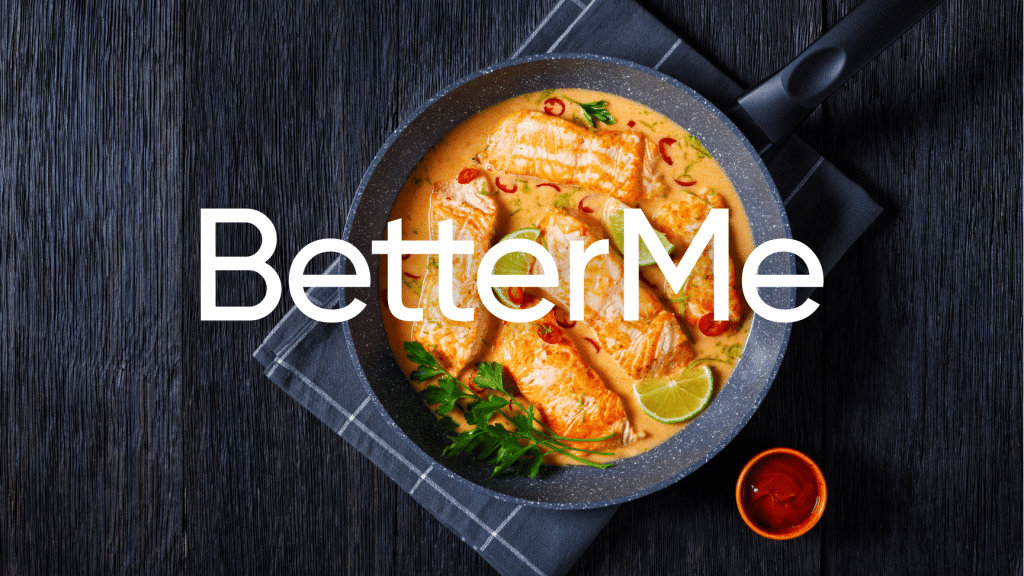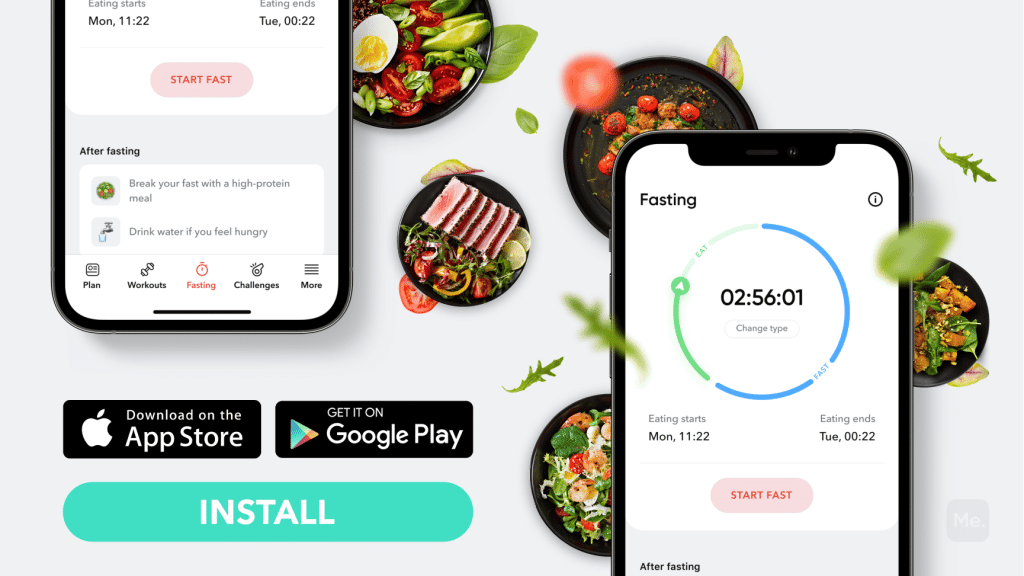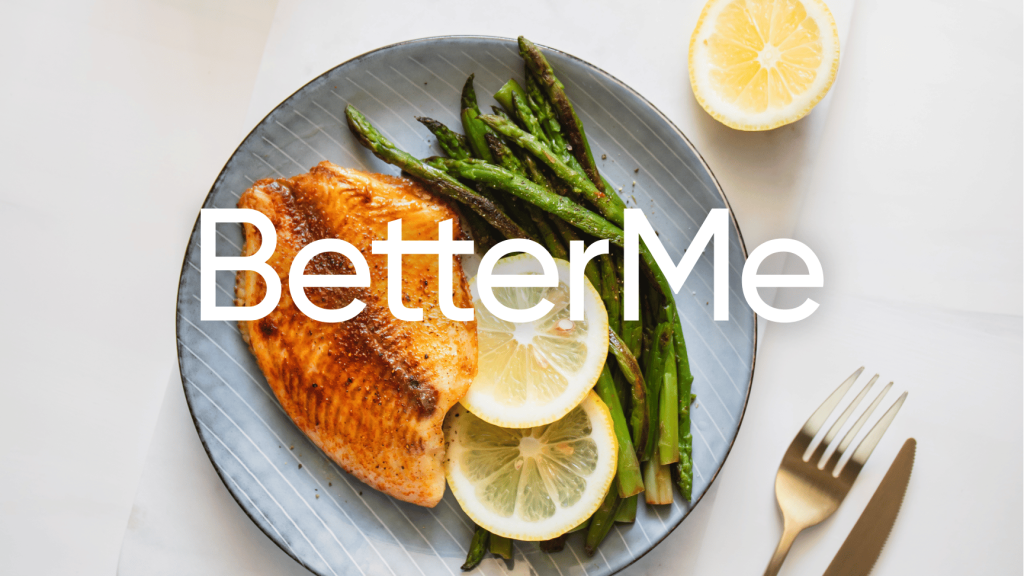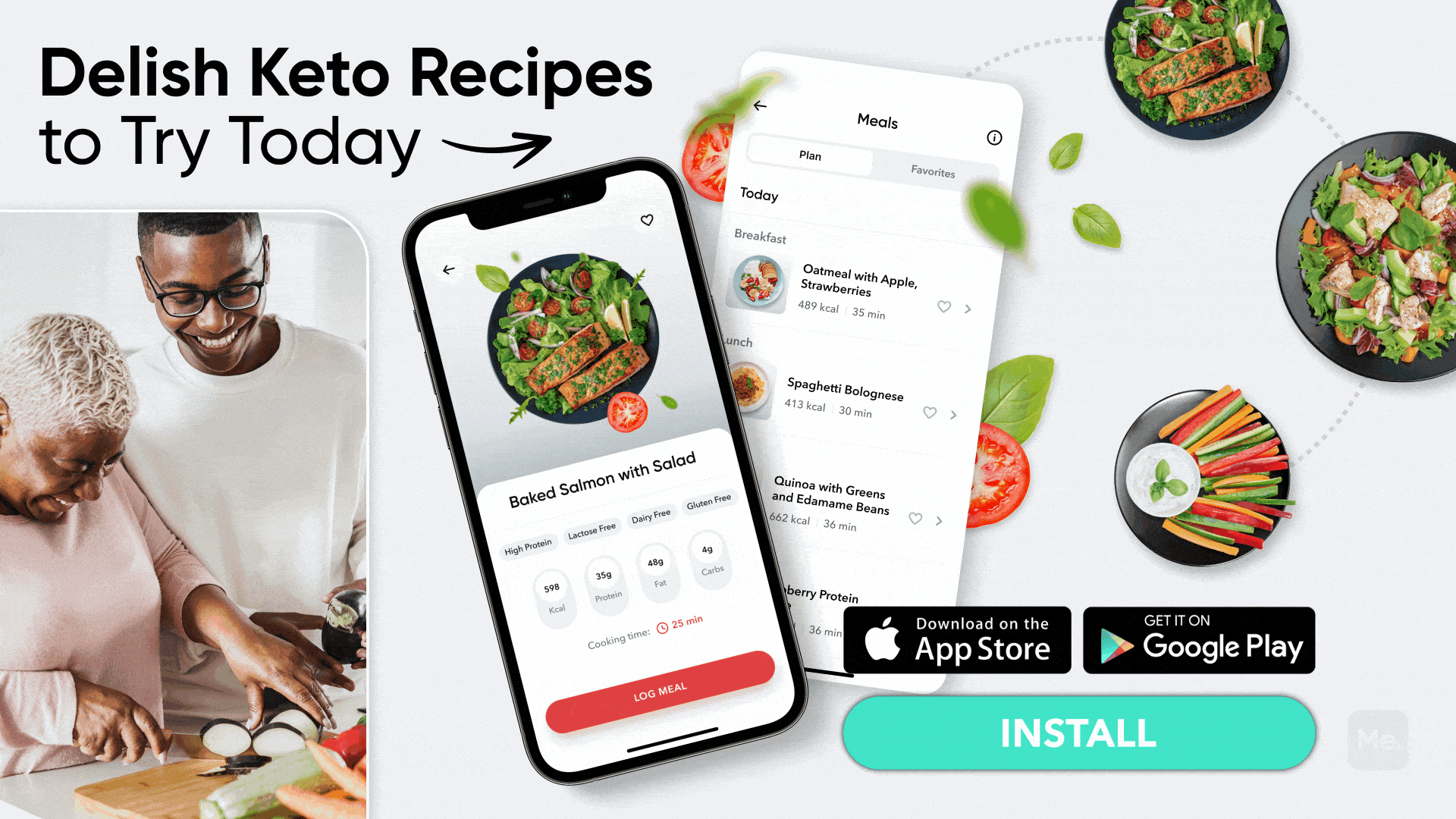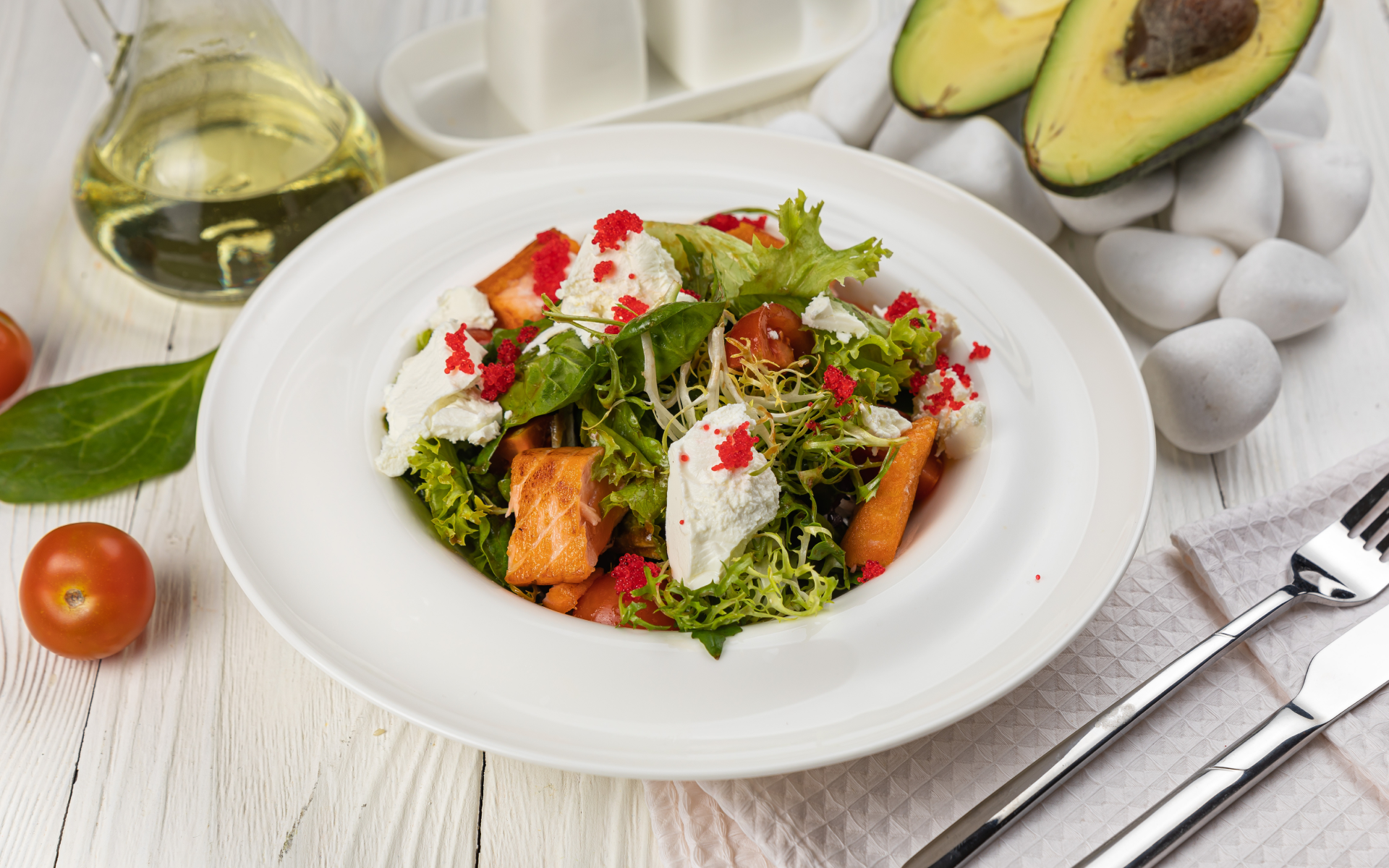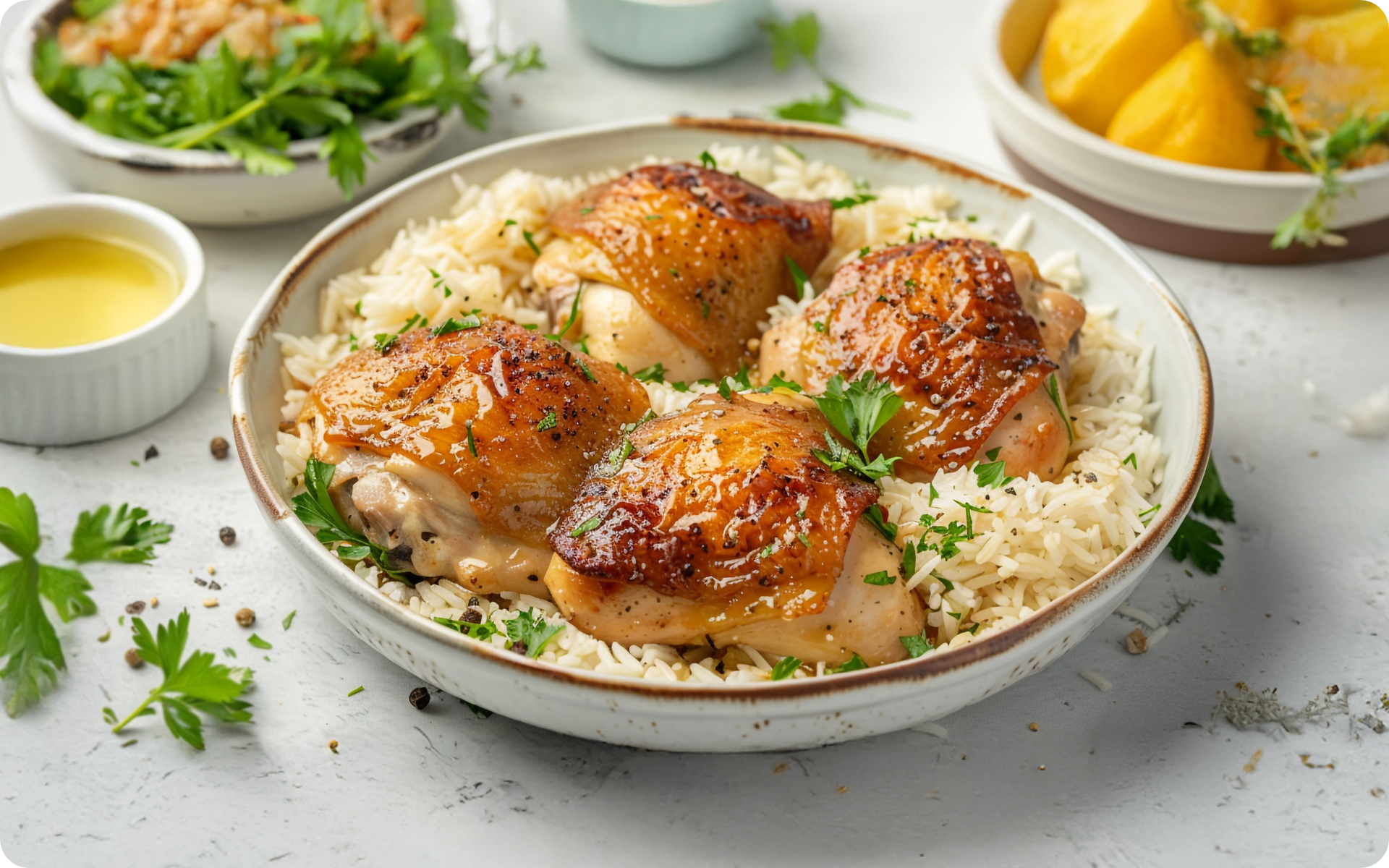Starting a low-carb diet can feel like a daunting challenge, especially when you have to give up some of your favorite comfort foods. We’ve all been there – that moment when you’re craving a slice of pizza or a warm, buttery croissant, but you know it’s not part of your keto journey. It’s tough, and sometimes it feels like you’re fighting an uphill battle. Until you discover that the key to success on a ketogenic diet is incorporating delicious high-fat foods that not only satisfy your cravings but also fuel your body with the energy it needs. In this comprehensive guide, we’ll reveal the best choices for high-fat keto foods, making it easier for you to stay on track and enjoy your low-carb lifestyle.
Why High Fat For Keto?
The ketogenic diet, or keto for short, is a high-fat, moderate protein, and very low carbohydrate diet.
The primary goal of this diet is to shift the body’s metabolism from burning carbohydrates as its primary fuel source to burning fats instead. This metabolic state is known as ketosis.
But why exactly is a high fat intake necessary for the keto diet? Let’s dive into the science behind it.
Fueling Ketosis
When you significantly reduce your carbohydrate intake, your body has to find an alternative source of energy. This is where fats come in.
By consuming a high-fat diet, you provide your body with an adequate supply of fatty acids. They can then be converted into ketones – molecules that can be used as fuel when glucose (from carbohydrates) is scarce (4).
Ketones are produced in the liver from fatty acids and serve as an energy source for the brain, heart, and muscles.
Satiety And Appetite Control
One of the main advantages of a high-fat diet is its ability to promote satiety and appetite control.
Fats take longer to digest than carbohydrates, which means they stay in your stomach longer and help you feel fuller for more extended periods. This can help prevent overeating and snacking between meals, making it easier to maintain a calorie deficit and lose weight (1).
Read More: Is Mustard Keto? A Look Into Condiments And The Ketogenic Diet
Hormonal Balance
Fats play a crucial role in hormone production and regulation, particularly for sex hormones like estrogen and testosterone. Consuming a diet rich in healthy fats may help support appropriate hormone levels and function, which is essential for overall health and well-being (1).
Improved Insulin Sensitivity
A high-fat, low-carb diet has been shown to improve insulin sensitivity, which is crucial for individuals with type 2 diabetes or those at risk of developing it (1).
By reducing carbohydrate intake, blood sugar levels are better regulated, and the body requires less insulin to manage glucose levels. This can lead to a reduced risk of developing type 2 diabetes or help in managing the condition if already diagnosed (1). However, the diet also increases the risk of hypoglycemic (low blood sugar) events, which can be dangerous. If you are interested in the keto diet and have diabetes or impaired glucose tolerance, be sure to work closely with your healthcare provider.
Enhanced Cognitive Function
Ketones produced during ketosis can provide an efficient source of fuel for the brain. Studies suggest that ketone bodies may improve cognitive function, and memory in individuals with neurodegenerative disorders like Alzheimer’s disease which affect glucose metabolism in the brain (3).
If you’ve mustered up the courage to crush your weight loss goal, let Betterme take the sting out of this demanding process. Our app will help you restructure your habits, remold your life and crank up your fitness results!
How Many Grams Of Fat For Keto Diet?
Determining the optimal amount of fat intake for a ketogenic diet depends on various factors, such as individual body composition, activity level, and weight loss goals.
The key is to find the right balance that allows you to maintain ketosis while also meeting your personal needs. To help you determine the appropriate amount of fat for your keto diet, let’s discuss a few essential factors to consider.
Calculate Your Macronutrient Ratios
The first step in determining your ideal fat intake is to calculate your macronutrient ratios.
A typical macronutrient distribution for the ketogenic diet is (4):
- 70-80% of calories from fat
- 20-25% of calories from protein
- 5-10% of calories from carbohydrates
These percentages will help guide you in determining how many grams of fat you should consume daily based on your total caloric intake.
Determine Your Caloric Needs
To calculate your daily caloric needs, you can use online tools like the Mifflin-St Jeor Equation or the Katch-McArdle Formula. These equations take into account factors such as age, weight, height, and activity level to estimate your total daily energy expenditure (TDEE).
For example, if your TDEE is 2,000 calories per day and you aim to get 70% of your calories from fat, you would need to consume 1,400 calories from fat (2,000 x 0.7). Since one gram of fat provides approximately 9 calories, this would equal roughly 156 grams of fat per day (1,400 ÷ 9).
Adjust Based On Goals And Progress
It’s essential to monitor your progress and adjust your fat intake accordingly.
For weight loss, you may need to create a calorie deficit by consuming fewer calories than your TDEE. In this case, consider reducing your fat intake while maintaining the same protein and carbohydrate percentages.
If you notice that you’re not maintaining ketosis, you may need to adjust your macronutrient ratios by slightly increasing your fat intake and decreasing your carbohydrate and/or protein intake.
Listen To Your Body
Finally, remember that everyone’s body is different, and there is no one-size-fits-all approach to determining the optimal grams of fat for a keto diet.
Pay attention to how your body feels and performs as you adjust your fat intake, and consider consulting with a nutritionist or healthcare professional for personalized guidance.
Read More: Gain Weight & Muscle: The Right Way With These High Calories Keto Foods
What Are Good High-Fat Foods For Keto Diet?
The best high-fat foods for a keto diet are those rich in healthy fats, specifically monounsaturated and polyunsaturated fats, as well as some saturated fats from natural sources.
It’s crucial to focus on the quality of fats rather than just the quantity, as not all fats are created equal.
Healthy Fats For Keto
Monounsaturated Fats (MUFAs)
These fats are known for their heart-healthy benefits (6). They can be found in foods like avocados, olive oil, and nuts like almonds, macadamia nuts, and pecans.
Polyunsaturated Fats (PUFAs)
These fats, including omega-3 and omega-6 fatty acids, play a critical role in brain function and overall health (6). Good sources of PUFAs include fatty fish (salmon, mackerel, sardines), flaxseeds, chia seeds, and walnuts.
Fats To Limit Or Avoid
Trans Fats
These artificially created fats are found in partially hydrogenated oils and should be avoided entirely. They have been linked to an increased risk of heart disease and inflammation (6).
Natural Saturated Fats
While saturated fats have been criticized for their potential negative impact on heart health, not all saturated fats are harmful (6). Those found in certain natural sources like coconut oil, grass-fed butter, and ghee can be included in moderation within a keto diet, but saturated fat overall should be limited.
Reasons why BetterMe is a safe bet: a wide range of calorie-blasting workouts, finger-licking recipes, 24/7 support, challenges that’ll keep you on your best game, and that just scratches the surface! Start using our app and watch the magic happen.
The Best High-Fat Foods For Keto
To help you make the best food choices for a keto diet, let’s explore various categories of high-fat foods that are rich in healthy fats and other essential nutrients.
Oils And Fats
Olive Oil
Rich in monounsaturated fats, olive oil is an excellent choice for cooking and salad dressings. It has anti-inflammatory properties and is believed to promote heart health (6).
Avocado Oil
With a high smoke point and abundant in monounsaturated fats, avocado oil is suitable for cooking and drizzling over salads.
Coconut Oil
Containing medium-chain triglycerides (MCTs), coconut oil can be easily converted into ketones, providing an instant source of energy (2). However, it is advised to use it in moderation due to its saturated fat content.
MCT Oil
Derived from coconut or palm oil, MCT oil can be added to coffee, smoothies, or salad dressings for an extra boost of healthy fats and energy.
Dairy And Dairy Alternatives
Grass-Fed Butter
A source of natural saturated fats, grass-fed butter also contains beneficial nutrients like conjugated linoleic acid (CLA) and vitamins A, E, and K2. Moderation is key because of its saturated fat content.
Ghee
Clarified butter with milk solids removed, ghee is lactose-free and high in fat-soluble vitamins and short-chain fatty acids. Like butter, ghee is high in saturated fats so should be used in moderation.
Full-Fat Greek Yogurt
Choose unsweetened versions to keep carbs low, and enjoy the creaminess and probiotic benefits.
Heavy Cream
Add it to coffee or use it in keto-friendly sauces and desserts in moderation for a rich and creamy texture.
Nuts And Seeds
Almonds
These nuts are high in monounsaturated fats, vitamin E, and magnesium. Enjoy them as a snack or use almond flour for keto baking.
Macadamia Nuts
Rich in monounsaturated fats and low in carbs, these nuts make a great keto snack or addition to salads.
Chia Seeds
A fantastic source of omega-3 fatty acids, chia seeds can be used to make keto-friendly puddings or as a thickening agent in recipes.
Flaxseeds
High in omega-3 fatty acids and fiber, flaxseeds can be ground into flax meals for baking or sprinkled over yogurt and salads.
Avocado
This versatile fruit is packed with monounsaturated fats, fiber, potassium, and vitamins. Enjoy it in guacamole, salads, or even keto-friendly chocolate mousse.
Fish And Seafood
Salmon
Rich in omega-3 fatty acids and high-quality protein, salmon can be grilled, baked, or pan-seared for a delicious keto meal.
Mackerel
Another excellent source of omega-3s, mackerel can be enjoyed smoked, canned, or fresh.
Sardines
Packed with healthy fats and essential nutrients like calcium and vitamin D, sardines can be eaten straight from the can or added to salads.
Eggs
Nutrient-dense and versatile, eggs are an excellent source of healthy fats, protein, and vitamins. Enjoy them boiled, scrambled, fried, or in keto-friendly baked goods.
Tips For Success When Eating High-Fat Foods For Keto
To make this guide to high-fat foods for keto even more comprehensive, let’s explore a few more aspects that can help you optimize your keto lifestyle.
Portion Control And Balance
While it’s essential to focus on high-fat foods for keto, it’s also necessary to practice portion control and maintain a balance in your diet.
Consuming excessive amounts of fats, even healthy ones, can lead to weight gain and other health issues. Make sure to monitor your fat intake and adjust it according to your goals and progress.
Importance Of Vegetables
Incorporate low-carb, non-starchy vegetables into your keto diet for added fiber, vitamins, and minerals.
Some keto-friendly vegetables include:
- Leafy greens (spinach, kale, arugula)
- Cruciferous vegetables (broccoli, cauliflower, Brussels sprouts)
- Asparagus
- Zucchini
- Bell peppers
You can cook these vegetables using healthy fats like olive oil, avocado oil, or grass-fed butter to enhance their flavor and boost your fat intake.
Focus On Quality Protein Sources
A well-rounded keto diet should also include moderate amounts of high-quality protein sources. Opt for grass-fed meats, pasture-raised poultry, and wild-caught seafood whenever possible. These options provide not only protein but also essential nutrients and possibly healthier fat profiles.
Hydration And Electrolytes
When following a keto diet, it’s crucial to stay hydrated and replenish electrolytes, as the initial phase of ketosis may cause water loss and electrolyte imbalances. Make sure to drink plenty of water and consume electrolyte-rich foods like avocados, leafy greens, nuts, and seeds.
Adaptation Period And Potential Side Effects
Be prepared for an adaptation period when starting the keto diet, as your body adjusts to using fat as its primary fuel source. This period, often referred to as the “keto flu,” may include temporary side effects like fatigue, headaches, and irritability.
By staying consistent with your high-fat food choices, staying hydrated, and replenishing electrolytes, you can minimize these side effects and successfully transition into ketosis. If you experience these side effects for a prolonged period, consider increasing your carb intake and talk to your healthcare provider.
Conclusion
Incorporating high-fat foods into your keto diet is essential for achieving and maintaining ketosis.
By focusing on healthy fats like monounsaturated and polyunsaturated fats, as well as natural saturated fats in moderation, you can optimize your keto lifestyle for weight loss, overall health, and well-being.
Remember to practice portion control, include vegetables and quality protein sources, stay hydrated, and replenish electrolytes to ensure a balanced and sustainable approach to the ketogenic diet.
DISCLAIMER:
This article is intended for general informational purposes only and does not serve to address individual circumstances. It is not a substitute for professional advice or help and should not be relied on for making any kind of decision-making. Any action taken as a direct or indirect result of the information in this article is entirely at your own risk and is your sole responsibility.
BetterMe, its content staff, and its medical advisors accept no responsibility for inaccuracies, errors, misstatements, inconsistencies, or omissions and specifically disclaim any liability, loss or risk, personal, professional or otherwise, which may be incurred as a consequence, directly or indirectly, of the use and/or application of any content.
You should always seek the advice of your physician or other qualified health provider with any questions you may have regarding a medical condition or your specific situation. Never disregard professional medical advice or delay seeking it because of BetterMe content. If you suspect or think you may have a medical emergency, call your doctor.
SOURCES:
- Advantages and Disadvantages of the Ketogenic Diet: A Review Article (2020, nih.gov)
- Coconut oil: heart-healthy or just hype? (2020, harvard.edu)
- Effects of Ketone Bodies on Brain Metabolism and Function in Neurodegenerative Diseases (2020, nih.gov)
- Ketogenic Diet (2022, nih.gov)
- Omega-6 fatty acids (n.d., mtsinai.org)
- The truth about fats: the good, the bad, and the in-between (2022, harvard.edu)

